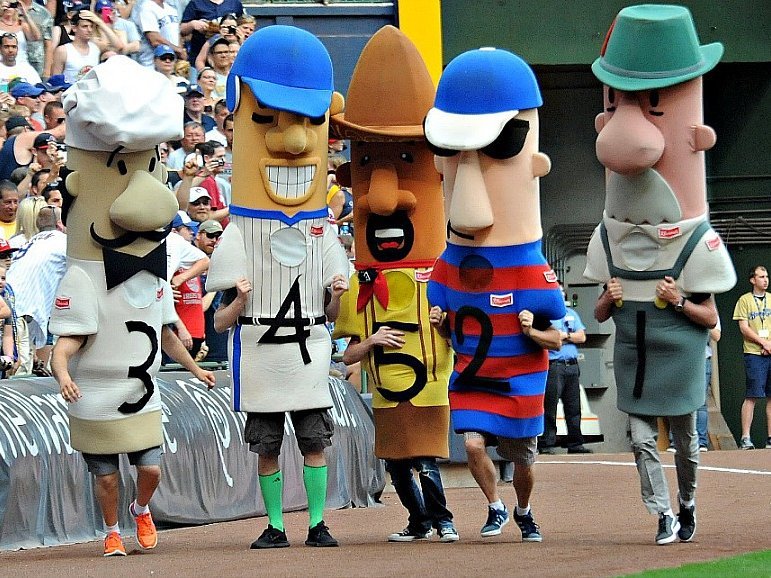It’s a hitter’s count, and you get what you’re expecting. You pick up the release point of the ball, and identify the speed and rotation of the pitch. The kinetic chain begins uncoiling from the ground up – feet, to knees, to the hips bringing the arms and hands through the hitting zone.
The result is more than just contact – ball is flush with barrel.
In an instant, the best feeling in baseball turns into the worst, as the ball dies on a line into leather, an infielder positioned oddly around the second base bag.
The crowd gasps at the crack, exhales a groan as the ball is tossed around the infield. The hitter tears at his batting gloves, looking off into the distance.
Hitting a baseball is one of the hardest athletic acts to perform, and it results in failure more often than not.
Now, in 2013, it’s that much harder thanks to advanced study of a hitter’s spray charts, swing paths, and overall tendencies at the plate.
The above scene is often described as "it was hit hard, but right at somebody."
Indeed it was – and it was set up that way on purpose.
"Yeah, it is," shrugged Milwaukee Brewers first base coach Garth Iorg, who positions the team’s defense when the opposition is at the plate.
The Brewers cull information from an opponent’s last 150 to 190 at-bats to determine exactly where they hit the ball, coming up with shifts – drastic and subtle – in the infield and outfield to maximize out potential.
"Yeah, it works," Iorg said. "We wouldn’t do it if it didn’t work. It’s beneficial, there’s no doubt about it. It’s crazy."
Iorg is a baseball lifer, having played for the Toronto Blue Jays in the late 1970s into the 1980s,managed in the minor leagues in the 1990s and joined the Brewers prior to the 2011 season. When he managed, he used cards where he tracked opponents’ at-bats with hand-written notes.
Now, specific and sortable data from as many as 200 at-bats is available in an instant.
He does feel it’s harder than ever to actually get hits in Major League Baseball.
"Yeah, I think it (is)," he said. "But it seems like the good hitters get hits, you know? They hit. But yeah, it’s gotta be harder – you’re not going to roll a ball through as easy as you did in the past. That’s a little different. It’s gotta be harder to hit. The good hitters hit, but I think you take hits away. You do take hits away, no doubt about it."
For the offensive player, it can be incredibly discouraging.
"If a team knows where I hit the ball and that’s where they’re playing, that’s hard," Brewers infielder Jeff Bianchi said. "If I hit a ball that should be a hit and they’re paying right there and it’s a line drive and anywhere else it gets through for a single or double even, it’s frustrating because you think I smoked that ball and it should’ve been a hit and they’re right there. Offensively, it can cause some frustration."
But on the defensive side, Bianchi and his fellow infielders are often the ones put in such positions by Iorg.
A perfect example came in Friday's game against Pittsburgh. Here were the defensive alignments in three straight Pirates at-bats, all right-handers.
See the major shifting for Andrew McCutchen, protecting the third base line and second baseman Jeff Bianchi swung way over to his right.

The next batter was Pirates' first baseman Gaby Sanchez, who was played more traditionally.

Finally, you have Russell Martin at the plate. Note the subtle shift by Bianchi at second base (use the second base umpire's position as a guide).

"If they have a tendency, then why not move?," Bianchi said. "That’s what we do – we try to play where the stats say they hit the ball the most. Sometimes they’re going to beat us with the shift, but more often than not it seems like it works."
What was interesting about McCutchen's at-bat was that the outfield was swung hard the opposite way, with right fielder Norichika Aoki playing near the foul line - in direct opposition to the infielder's positioning.
"It’s so funny," Iorg said of such instances. "I mean, there’s so much … I guess human-ness, if that’s a word, in it. I got charts in there where some guys hit every ball in the air the opposite way and if they’re on the ground they pull it. It’s just so wild. That happens far more than you would think it does. It’s just, I don’t know, swing path, where the pitch is. There’s so many variables and you’re not going to be able to hit them all. You try to take out as much guesswork as possible."
"Human-ness" may not be a word, but it’s the one part of the game that can negate all of the information that is put together and blow up even the most mathematically sound defensive game plans.
"Nothing’s 100 percent. It’s still humans doing the business," Iorg said. "So if a guy doesn’t throw a pitch where you think he’s going to throw it and it goes somewhere else or the guy – we call it blocking it off – hits a ground ball the other way or something like that. That happens. That’s always going to happen. There’s some balls that get through that if you had been playing just straight up, like the old way, you would’ve caught. But the takeaway is by far an advantage in shifting."
Logan Schafer knows exactly what Iorg is talking about.
Considered one of the team’s better defensive outfielders and capable of playing all three spots, Schafer uses a mix of information and, well, "human-ness."
"It’s a game of feel too, and you’ve got to kind of understand and kind of keep your fingers on the pulse of the game rather than make it a straight math equation," Schafer said. "It’s baseball. So I try and understand and enjoy the game for what is."
Iorg agreed, mainly because "It varies with each pitcher," he said.
"With (John Axford) throwing 97, 98, I won’t drastically shift as much. Or (Yovani Gallardo) can spot a ball down and away and the guy can’t pull so we won’t shift as much. It’s good to have it all on paper but there is a feel for it."
Such variances, like a pitcher hitting or missing his spot, a hitter recognizing the shift and manipulating his bat to beat it, or even taking additional steps in a certain direction in the outfield, is what will always make defense in baseball an inexact science.
"If every ball hit hard was a base hit our averages would all be much higher and everything would be a little different," Schafer said. "It’s the game of baseball. It’s a fun game and it’s one of those games where you can do things like that. It’s not set in stone. It’s not a game of checkers or chess. It’s straight up the game of baseball. That’s why it’s a feel game too."
He couldn’t help but start to smile.
"That’s why the game is great and that’s why at times, you just hate it, to be honest," Schafer continued. "But that’s why it’s a great game. That’s why I enjoy playing it because I get to take some things away and you get to be given some things too. No one ever thinks about the things that should’ve been an easy ground out that was a dinker, a 17-hopper through an infield because the shift was on.
"It gives and takes."
Jim Owczarski is an award-winning sports journalist and comes to Milwaukee by way of the Chicago Sun-Times Media Network.
A three-year Wisconsin resident who has considered Milwaukee a second home for the better part of seven years, he brings to the market experience covering nearly all major and college sports.
To this point in his career, he has been awarded six national Associated Press Sports Editors awards for investigative reporting, feature writing, breaking news and projects. He is also a four-time nominee for the prestigious Peter J. Lisagor Awards for Exemplary Journalism, presented by the Chicago Headline Club, and is a two-time winner for Best Sports Story. He has also won numerous other Illinois Press Association, Illinois Associated Press and Northern Illinois Newspaper Association awards.
Jim's career started in earnest as a North Central College (Naperville, Ill.) senior in 2002 when he received a Richter Fellowship to cover the Chicago White Sox in spring training. He was hired by the Naperville Sun in 2003 and moved on to the Aurora Beacon News in 2007 before joining OnMilwaukee.com.
In that time, he has covered the events, news and personalities that make up the PGA Tour, LPGA Tour, Major League Baseball, the National Football League, the National Hockey League, NCAA football, baseball and men's and women's basketball as well as boxing, mixed martial arts and various U.S. Olympic teams.
Golf aficionados who venture into Illinois have also read Jim in GOLF Chicago Magazine as well as the Chicago District Golfer and Illinois Golfer magazines.







